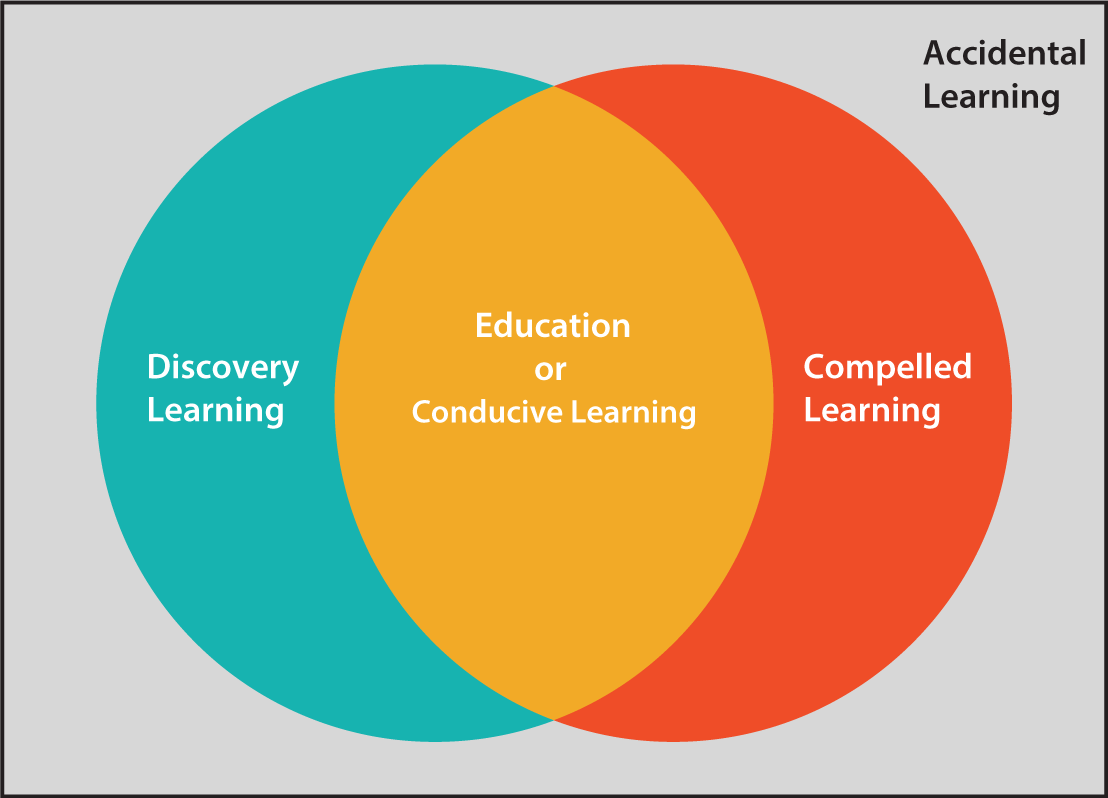Learning
Learning is the increasing of complexity of mental structures.
For an overview of complexity of mental structures, see Bertolero & Bassett (2019), Scientific American: https://www.scientificamerican.com/article/how-the-mind-emerges-from-the-brains-complex-networks/.
Learning is broadly classified in educology as: accidental, discovery, conducive, and compelled.


Venn diagram representation of learning and education from Frick (2017), Theory of Totally Integrated Education. Adapted from Steiner (1988), Methodology of Theory Building, Schemas 2 and 3, pp. 16-17. Graphic design by Colin Gray and Ted Frick.
This definition of learning is consistent with what Kandel (1989) has concluded on a biological level, claiming that long-term memory is “associated with growth in synaptic connections [among neurons]” (p. 115), and that “learning produces enduring changes in structure and function of synapses” (p. 121).
This is also consistent with Steiner (1988), Methodology of Theory Building, who defines learning as, "pyschical development" which is the "formation of mental structures" (p. 40).
Steiner further classified learning as:
- fortuitous (non-intended and not guided--that is, chance or accidental learning);
- training (non-intended but guided--that is, compelled learning);
- discovery (intended but non-guided); and
- education (intended and guided). (pp. 15-16)
Compare learning with forgetting.
